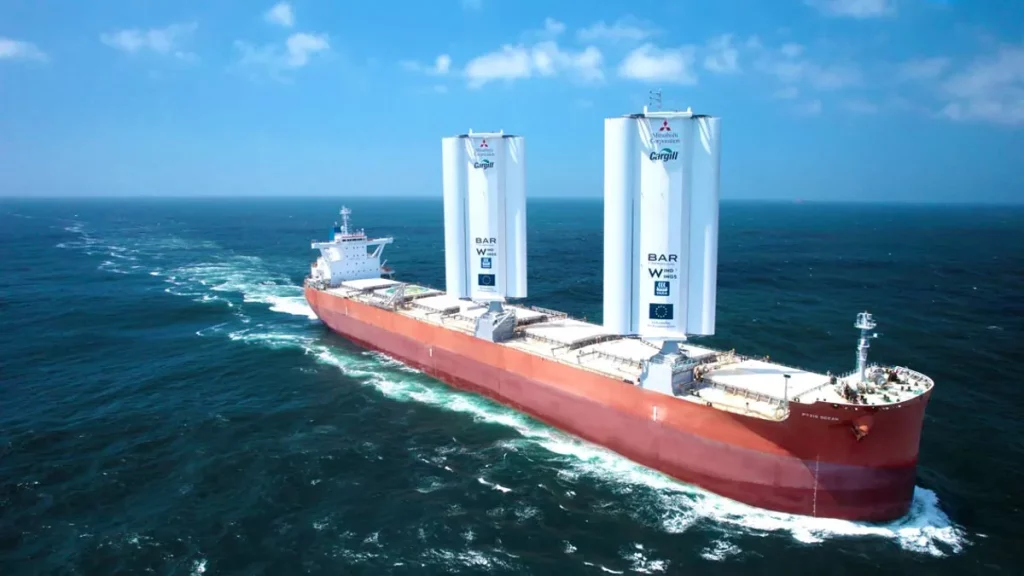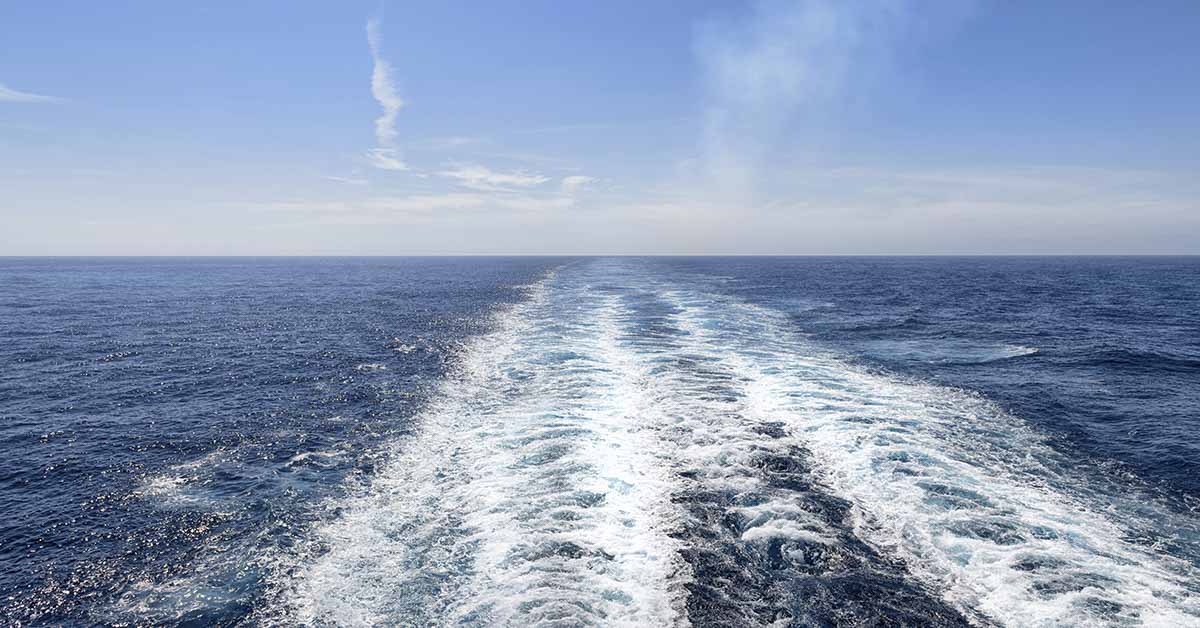In a historic move towards sustainable shipping, Cargill and BAR Technologies have initiated a pioneering project that could reshape the future of cargo vessels.1 The project involves retrofitting a cargo ship, Pyxis Ocean, with innovative WindWings, and gigantic metal sails that harness the power of wind to create wind-powered cargo ships.2 This groundbreaking technology is poised to reduce fuel consumption and emissions, making it a significant stride toward decarbonizing the shipping industry.3
Harnessing the Power of Wind-Powered Cargo Ships
The WindWings, measuring up to an impressive 37.5 meters in height, are installed on the deck of the Pyxis Ocean, marking the first-ever application of such technology in commercial shipping. These mammoth metal sails, produced by Yara Marine Technologies, are expected to generate remarkable fuel savings, potentially up to 30 percent. Furthermore, when combined with alternative fuels, the savings could be even more substantial.
Jan Dieleman, President of Cargill’s Ocean transportation business, expressed the company’s commitment to wind-powered cargo ships. He emphasized that innovation like WindWings involves risks, but Cargill, in partnership with visionary shipowner Mitsubishi Corporation, is dedicated to investing in such sustainable solutions. This pioneering initiative is also co-funded by the European Union as part of the CHEK Horizon 2020 initiative, offering a retrofit solution to help existing vessels transition to more environmentally friendly operations.

The Path Forward
As the Pyxis Ocean embarks on its maiden voyage, the performance of the wind-powered cargo ship will be closely monitored in real-world conditions. The data gathered will be instrumental in refining their design and efficiency. BAR Technologies and Yara Marine Technologies have ambitious plans to produce hundreds of these wings over the next four years, aiming to revolutionize the maritime industry. Additionally, BAR Technologies is exploring the development of new vessels with improved hydrodynamic hull forms to further enhance the effectiveness of wind propulsion.
The maritime industry faces a significant challenge in reducing its carbon emissions. It is responsible for about 2.8 percent of global greenhouse gas emissions, and the demand for international freight trade is expected to triple by 2050. While good old-fashioned windsails could address this issue, there’s no certainty it’s a silver bullet solution.
John Cooper, Chief Executive Officer of BAR Technologies, believes that this innovative approach will play a crucial role in achieving the industry’s ambition of reducing CO2 emissions. Wind-powered cargo ships are a near marginal cost-free fuel, offering the opportunity for significant reductions in emissions and efficiency gains in vessel operating costs.
The Global Impact of Wind-Powered Cargo Ships
The WindWing project is part of a broader initiative co-funded by the European Union, aiming to reduce carbon emissions in the shipping industry. WindWings can help vessel owners meet new industry rules on energy efficiency by harnessing wind power. On an average global route, wind-powered cargo ships can save 1.5 tonnes of fuel per WindWing per day, with the possibility of saving more on trans-ocean routes. This can translate into significant cost savings for vessel owners, particularly when considering the potential higher costs of future fuels.
Experts acknowledge the promise of wind power in reducing the shipping industry’s carbon footprint.4 While the maritime industry is committed to reaching net-zero emissions from international shipping around 2050, the path to achieving this goal is complex. Wind-assisted technologies, like WindWings, offer an operational measure to make journeys more efficient while cleaner fuels are developed.
John Cooper of BAR Technologies is confident that the future for wind wings is “very rosy“. He predicts that by 2025, half of the new-build ships will be ordered with wind propulsion. The potential savings are substantial, with one-and-a-half tonnes of fuel per day per wing, translating to 20 tonnes of CO2 saved daily.
In conclusion, the maiden voyage of the Pyxis Ocean as a wind-powered cargo ship marks a significant milestone in the quest for sustainable shipping practices. It not only addresses the urgent need for eco-friendly propulsion but also presents a viable solution for existing cargo vessels to transition to greener operations. As the maritime industry takes bold steps towards reducing its carbon emissions, innovative projects like WindWings offer hope for a more sustainable and responsible future for global shipping.
Keep Reading: What if companies like Walmart turned their parking lots into solar farms?
Sources
- “Cargill and BAR Technologies’ ground-breaking wind technology sets sail, chartering a new lower-carbon path for the maritime industry.” Cargill. August 21, 2023.
- “Humans Have Invented Wind-Powered Ships (Again).” IFL Science. Tom Hale. August 21, 2023.
- “Pioneering wind-powered cargo ship sets sail.” BBC. August 21.
- “Wind-powered cargo ship sets sail in a move to make shipping greener.” CNN. Nell Lewis. August 21, 2023.

